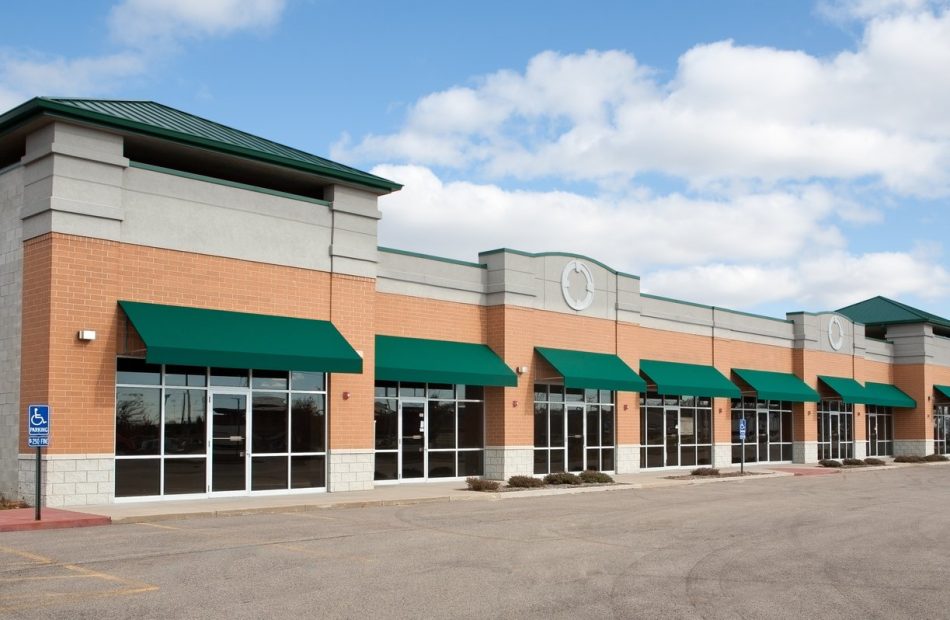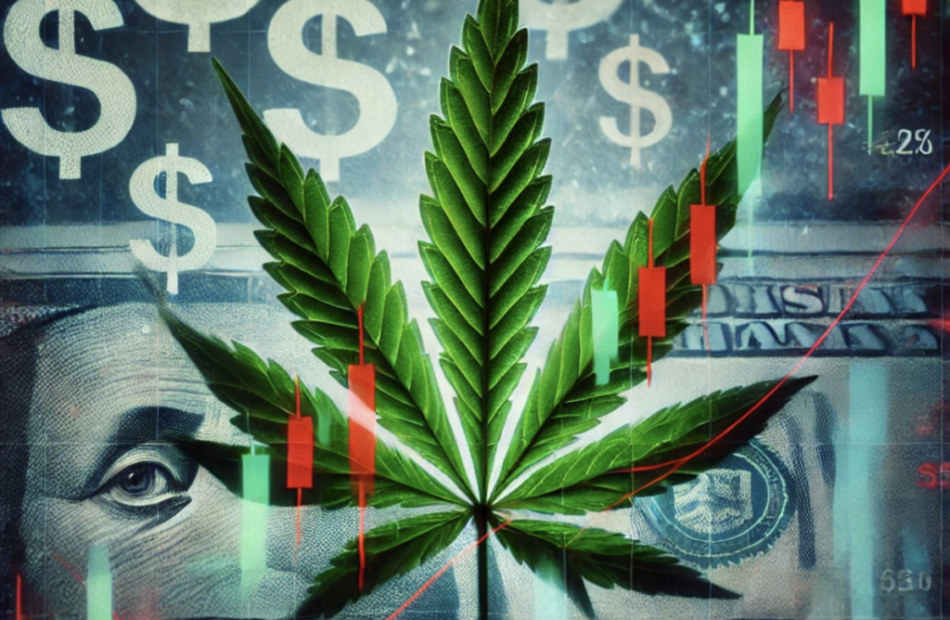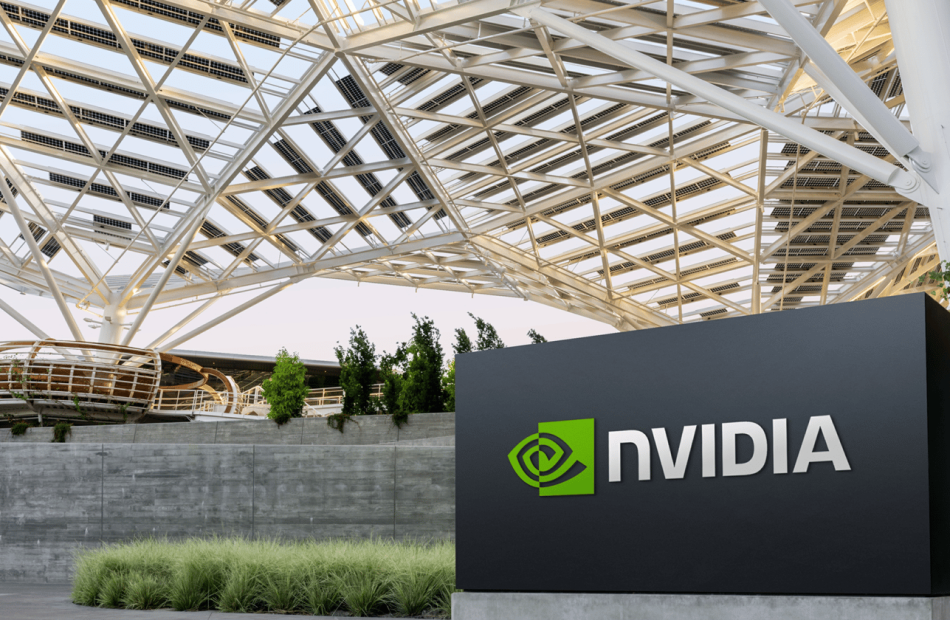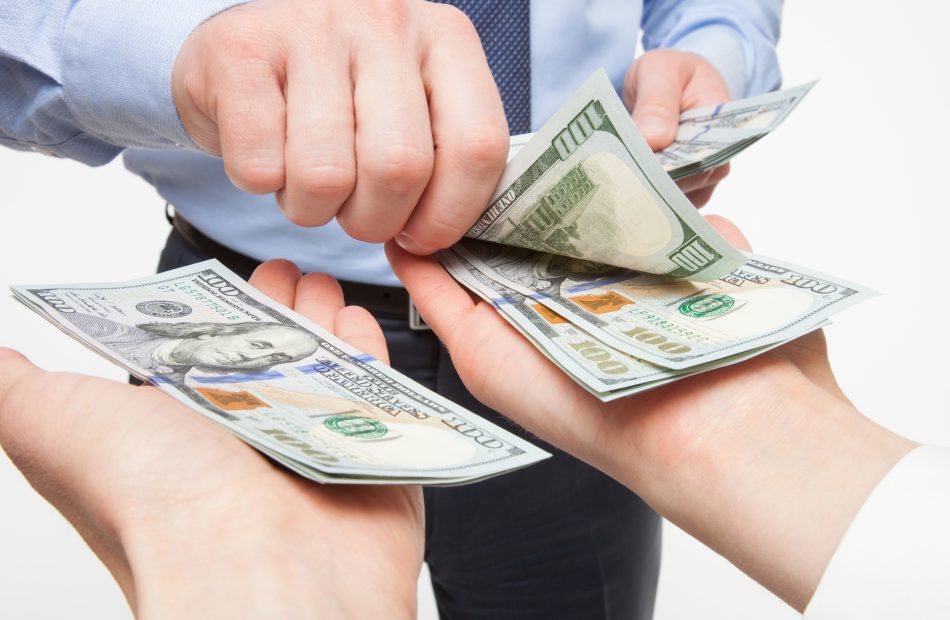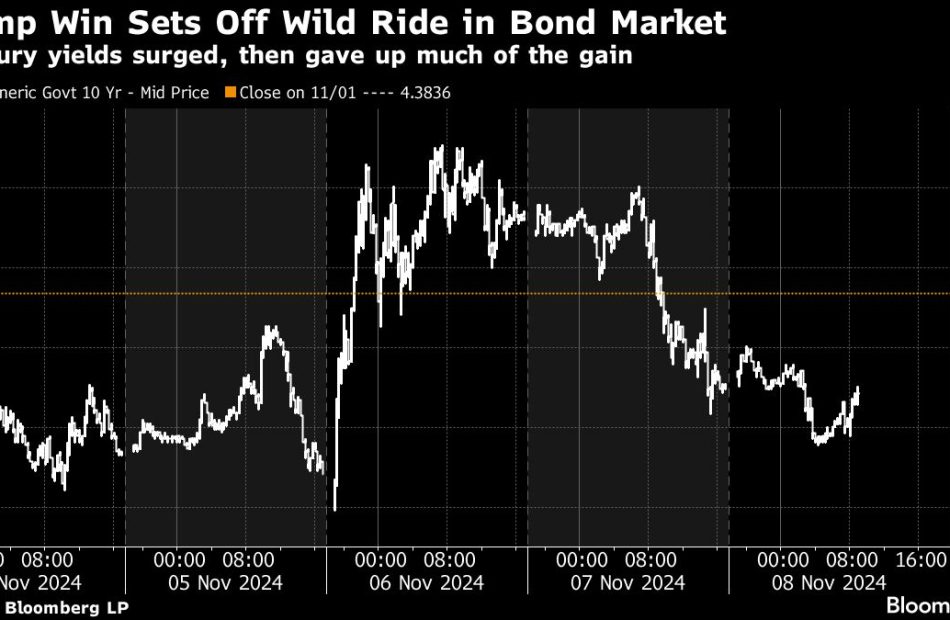Do the Prospects for Dividend Favorite Realty Income Look Strong, or Is Trouble Brewing?
Realty Income (NYSE: O) has long been a favorite of income-oriented investors given its monthly dividend payment, robust yield, and history of increasing its dividend. Meanwhile, the real estate investment trust (REIT) has delivered steady, consistent results over the years.
However, with a number of its tenants facing pressure and closing stores, the question becomes, is trouble brewing?
Start Your Mornings Smarter! Wake up with Breakfast news in your inbox every market day. Sign Up For Free »
Let’s take a closer look at Realty Income’s most recent quarterly report, the safety of its dividend, and how the REIT plans to deal with a number of struggling tenants.
Realty Income turned in another steady quarter, although investor attention was certainly focused on what is going on with its pharmacy, convenience store, and dollar store customers. All three concepts have been under pressure, with companies experiencing credit pressures and closing stores.
Realty Income management pointed to tenants that have recently gone through bankruptcy and how it has been able to get high recapture rates. Regarding Red Lobster restaurants, it said that it had 216 assets of which nine were rejected in bankruptcy court, with it getting a 91% recapture rate. It said that with Rite Aid, which has recently emerged from bankruptcy, it was able to get an 88% recapture rate.
Addressing Walgreens and its store closures, Realty Income said it has had 13 renewals come up this year, and that all were renewed, with a 100% recapture rate. Meanwhile, management noted the REIT has historically had over 100% recapture rates for lease renewals with CVS, Dollar Tree, and Family Dollar.
At the end of the quarter, Dollar General and Walgreens each accounted for 3.3% of its total annualized rent, while Dollar Tree/Family Dollar was 3.1% and CVS was 1.2%.
Meanwhile, Realty Income said it was looking to create a private capital fund to help it take advantage of the opportunities it is seeing across various verticals, including retail, industrial, data centers, and gaming. It said the fund would provide long-term stable capital while also providing it with recurring management fees.
Turning to the REIT’s third-quarter results, its revenue climbed 28% to $1.33 billion as new properties acquired through its acquisition of Spirit Realty in January and new investments bolstered results. Same-store rental revenue increased 0.2% in the quarter, while its occupancy rate was 98.7%. It said it had 170 lease renewals in the quarter with a 105% recapture rate.
Apple Bridges iOS-Android Messaging Gap: RCS Reactions Finally Displayed Correctly On iPhones
Apple Inc. AAPL has updated its messaging system to accurately display Android user reactions on iOS, marking a major step forward in iPhone–Android messaging.
What Happened: Apple has addressed the long-standing issue of Android, the operating system by Alphabet Inc.’s GOOG GOOGL Google, reactions appearing as separate lines on iOS.
Now, when an Android user reacts to an RCS message from an iOS user, the chosen emoji will be displayed in line with the message bubble.
Tests conducted by The Verge using iPhones running iOS 18.1 and various Android phones confirmed that both devices now display reactions as intended.
However, it remains unclear when this change was implemented and whether Google or Apple made the necessary adjustments.
Subscribe to the Benzinga Tech Trends newsletter to get all the latest tech developments delivered to your inbox.
Why It Matters: When RCS was initially launched on iOS in September, Android user reactions were still not being displayed correctly on iPhones, despite functioning properly in the reverse scenario.
The iMessage blue vs. green bubble debate underscores the contrasting messaging experience between iPhone users (blue bubbles) and Android users (green bubbles) when they communicate.
Over time, this difference has fueled social stigma, technical limitations, and even legal scrutiny of Apple’s practices.
Previously, when a user told Apple CEO Tim Cook that his mother couldn’t view videos he sent due to compatibility issues, Cook had a straightforward response: “Buy your mom an iPhone.”
Apple’s upgrade to RCS messaging support marks a surprising shift after years of resisting Google’s push for RCS adoption. Facing mounting pressure from China and the EU, Apple finally introduced basic RCS support in iOS 18.
Within the Messages app, Apple officially supports the basic RCS standard known as the RCS Universal Profile.
Emoji reaction support is part of RCS version 2.7, which should also include the ability to edit a sent message, although this feature could not be activated on iOS.
Check out more of Benzinga’s Consumer Tech coverage by following this link.
Read Next:
Disclaimer: This content was partially produced with the help of Benzinga Neuro and was reviewed and published by Benzinga editors.
Photo courtesy: Shutterstock
Market News and Data brought to you by Benzinga APIs
© 2024 Benzinga.com. Benzinga does not provide investment advice. All rights reserved.
Cannabis Stocks Plunged After Florida Legalization Failed: Rational Reaction Or Market Overreach?
The cannabis market is facing heightened volatility post-election as investor concerns mount over political uncertainty and the fallout from Florida’s failed legalization vote, leading to significant selloffs in top U.S. and Canadian cannabis stocks. Adult-use legalization was also rejected in North Dakota and South Dakota.
Given this setup, investors might be asking: was the post-elections selloff an overreaction or a rational market adjustment?
Experts analysts from Viridian Capital Advisors weighed in on the debate.
Market Meltdown: Was The Sell-Off Justified?
In the wake of Florida’s failed ballot vote for adult-use cannabis, the market cap of 31 publicly traded cannabis companies fell by $2.6 billion from Friday, November 1 to Wednesday, November 6.
Florida’s medical cannabis market alone is projected to reach $2.1 billion in sales by 2024.
If adult-use legalization had passed, it could have effectively doubled sales, adding another $2.1 billion.
Applying a conservative 30% EBITDA margin to these potential sales would yield an EBITDA loss of $630 million.
Using a 5x multiple, also considered conservative, the projected decline in market cap would be around $3.15 billion — suggesting that the $2.6 billion markdown might not have been as exaggerated as it seems.
However, there’s a caveat: not all companies on the list have operations in Florida, though 81% of the market cap is held by firms actively operating there.
A greater concern is the broader impact on the industry’s growth narrative.
Read Also: Cannabis Reform Stumbles In 2024 Elections: A State-By-State Breakdown As Stocks Take A Hit
Some Earnings Added Pessimism
For Viridian Capital Advisors, in addition to the disappointing ballot results, earnings reports from major players including Trulieve TCNNF, TerrAscend TRSSF, Curaleaf CURLF, Cannabist CBSTF and GTI GTBIF have compounded concerns.
The results revealed significant misses, even against lowered expectations.
Aggregate revenues for these companies are projected to be down 0.4% year-over-year and 1.1% sequentially. The decline in EBITDA is 2.2% year-over-year and 4.2% sequentially.
The failed vote has undeniably stretched the industry’s growth timeline, leaving investors to weigh potential catalysts against a stark present reality.
Cover: AI generated image
Market News and Data brought to you by Benzinga APIs
© 2024 Benzinga.com. Benzinga does not provide investment advice. All rights reserved.
Cannabis is evolving – don’t get left behind!
Curious about what’s next for the industry and how to leverage California’s unique market?
Join top executives, policymakers, and investors at the Benzinga Cannabis Market Spotlight in Anaheim, CA, at the House of Blues on November 12. Dive deep into the latest strategies, investment trends, and brand insights that are shaping the future of cannabis!
Get your tickets now to secure your spot and avoid last-minute price hikes.
3 Dividend Growth Stocks That Are Screaming Buys in November
The utility sector isn’t exactly known for growth, but that doesn’t mean you can’t find it if you are willing to look. And dividend growth is exactly what you’ll get from Brookfield Renewable (NYSE: BEP)(NYSE: BEPC), NextEra Energy (NYSE: NEE), and American Water Works (NYSE: AWK).
These three stocks represent three very different companies that get lumped in with the normally slow-growing utility sector. Here’s why you might want to buy these dividend growth stocks as November gets underway.
Start Your Mornings Smarter! Wake up with Breakfast news in your inbox every market day. Sign Up For Free »
Of the three stocks here, Brookfield Renewable is going to have the widest dividend appeal. That’s because the partnership share class (BEP) has a lofty 5.6% yield. The corporate share class (BEPC), which represents the same entity in every way, has a dividend yield of 4.7%, a function of the higher demand for the corporate shares that trade under a different (less complicated) tax structure.
Those yield figures are augmented by the fact that the distribution (or dividend, depending on the share class you are looking at) has grown by a 6% annualized rate since 2001. Looking forward, the goal is growth between 5% and 9% a year.
That’s a very attractive combination of growth and income. But the real story is Brookfield’s focus on renewable energy, which is expected to see increased demand for years into the future. That outlook is backed by the world’s shift from carbon-based energy to cleaner energy sources like solar and wind.
Brookfield is a one-stop shop in the renewable space, with hydroelectric, solar, wind, and storage assets spread across a portfolio with a global reach. If you like dividend growth and you like big yields, this is the opportunity to consider first.
If you aren’t quite ready to go all in on clean energy, don’t worry, you don’t have to. You can buy a utility like NextEra Energy that offers a mix of traditional regulated utility assets and clean energy.
That’s what backs this company’s 2.6% yield and huge 10% annualized dividend growth rate over the past decade. That growth rate isn’t a fluke; management is targeting 10% dividend growth through at least 2026.
The clean energy side of the business is the growth engine, as the company continues to invest in solar and wind power. Just like Brookfield Renewable, NextEra Energy appears to be in the early innings of a long growth game.
Prediction: Nvidia Stock Is Going to Soar After Nov. 20
Nvidia (NASDAQ: NVDA) was a $360 billion company at the start of 2023. In less than two years, its market capitalization ballooned to $3.5 trillion. Its ability to turn artificial intelligence (AI) into piles of cash is the driving force behind that incredible growth.
Nvidia’s graphics processing units (GPUs) for data centers are the most popular in the world for developing AI, and demand continues to outstrip supply. That propelled the company’s revenue to triple-digit percentage growth in each of the last five quarters.
Start Your Mornings Smarter! Wake up with Breakfast news in your inbox every market day. Sign Up For Free »
On Nov. 20, Nvidia will release a fresh batch of financial results for its fiscal 2025 third quarter (ended Oct. 31), and if past quarters are any indication, it could be an absolute blowout. Here’s how I predict the stock will react once the results are announced.
Nvidia’s flagship H100 GPU went into production in 2022, and it was the go-to choice for AI data center operators throughout 2023. GPUs are designed for parallel processing, so they can complete several tasks simultaneously with a very high throughput. They also have substantial amounts of built-in memory, which makes them ideal for training AI models and performing AI inference.
AI applications are forecast to drive a productivity boom across the globe, which could be worth up to $200 trillion in economic activity by 2030, according to Cathie Wood‘s ARK Investment. Tech giants like Microsoft and Amazon are filling their data centers with AI GPUs and renting the computing capacity to developers for a fee. It’s a win for them, a win for Nvidia, and a win for the developers who don’t have billions of dollars to spend on their own infrastructure.
Nvidia’s H100 and the newer H200 are still in high demand, but the company’s latest Blackwell architecture promises the biggest leap in performance so far. Blackwell-based GB200 GPU systems can perform AI inference at 30 times the pace of the equivalent H100 systems.
CEO Jensen Huang says individual GB200 GPUs will cost around $30,000 to $40,000, which is about the same price for the H100 when it first came out.
In other words, Blackwell will drive an incredible improvement in cost efficiency, which will make the most-advanced large language models (LLMs) more financially accessible to a wider group of developers and businesses.
GB200 shipments have already begun and will ramp up next year. One estimate suggests Nvidia is on track to ship up to 200,000 individual GB200 GPUs in the final three months of 2024, and we already know Microsoft is currently offering the new GPU to developers. Since Nvidia’s fiscal 2025 third quarter includes October, its upcoming report might include billions of dollars in GB200 sales.
Eli Lilly Just Hit a Milestone That Disappointed. Here's Why You Should Still Buy the Stock.
Even a juggernaut like Eli Lilly (NYSE: LLY) can miss the mark sometimes. When it reported its third-quarter earnings on Oct. 30, its share price plunged to the tune of 11% before recovering somewhat, signaling that the market’s reception to its financial performance was strongly negative.
Shareholders discovered that there’s reason to believe that a previously hypothesized risk is now real and that it presents a possible threat to the stock’s prior outstanding performance. Yet the stock is still unambiguously one of the better investments available right now.
Start Your Mornings Smarter! Wake up with Breakfast news in your inbox every market day. Sign Up For Free »
Here’s what happened and why Eli Lilly stock is still worth buying.
First, the bad news: Lilly slightly cut its guidance for 2024. Whereas it previously anticipated bringing in as much as $46.6 billion in sales, it’s now only expecting a max of $46 billion. The reduced guidance for earnings per share (EPS) was even more concerning, with the new high-end estimate of $12.55 where prior guidance called for $15.60 at the high end.
During Q3, Eli Lilly brought in $11.4 billion in sales, up 20% from a year prior, and non-GAAP (adjusted) EPS of $1.18, which was $0.29 less than what the average of Wall Street analysts had estimated. These would normally be considered great results for a pharmaceutical company of Lilly’s (massive) size.
The culprit for the underperformance is where things get interesting. Per management, during the second quarter, wholesalers of its blockbuster drugs for type 2 diabetes and obesity, Mounjaro and Zepbound, essentially loaded up on more doses than there was demand for. Then, during Q3, they didn’t need to buy as many additional doses from Lilly to shore up their inventories, which was a moderate headwind for revenue. Yet at the same time, sales of both medicines were responsible for the lion’s share of the company’s top line, as well as its top-line growth.
Those medicines were in a state of shortage in the U.S. over the last year or so, and have only recently, with the help of billions in manufacturing investments, reached a state of acceptable supply relative to the level of demand from new and current patients. In other words, it makes perfect sense that wholesalers finally purchased more doses than they were able to sell, reversing the high-demand dynamic of the prior quarters.
Still, this new development and the market’s reaction to it means that Lilly has doubtlessly reached a grim milestone. It isn’t that the market for its best-selling drugs is fully saturated and the heyday of growth is over. It’s that the market’s expectations are for the most intense period of that heyday to go on forever, which has now become priced into the valuation of the stock.
Fueled by Another Acquisition, Energy Transfer Continues to Deliver Record-Setting Results
Energy Transfer (NYSE: ET) has been on an acquisition binge. The midstream giant recently closed its nearly $3.1 billion purchase of WTG Midstream, which followed its $7.1 billion merger with fellow master limited partnership (MLP) Crestwood Equity Partners last November. On top of that, the company has continued to invest heavily in organically expanding its operations.
Those investments helped fuel record volumes across several of the MLP’s assets during the third quarter, contributing to its strong earnings growth. With a large and growing pipeline of expansion opportunities, Energy Transfer should have plenty of fuel to continue growing.
Start Your Mornings Smarter! Wake up with Breakfast news in your inbox every market day. Sign Up For Free »
Energy Transfer delivered robust volume growth across nearly its entire franchise during the third quarter, setting several new partnership records:
-
Crude oil transportation: Up 25% to a record level.
-
Crude oil export volume: Up 49%.
-
Midstream gathered volume: Up 6% to a record level.
-
Midstream natural gas liquids (NGLs) produced volume: Up 26% to a record level.
-
NGL fractionation volume: Up 12% to a record level.
-
Total NGL exports: Up 3% to a record level.
-
NGL transportation volume: Up 4% to a record level.
-
Refined products transportation volume: Up 4%.
The acquisition of Crestwood Equity Partners and WTG Midstream helped fuel the record volume. The MLP also benefited from recently completed expansion projects and a strong market environment.
Energy Transfer’s record-setting volume helped fuel strong earnings growth in the quarter. The MLP generated nearly $4 billion of earnings before interest, taxes, depreciation, and amortization (EBITDA), an almost 12% increase from the year-ago period. Meanwhile, distributable cash flow was roughly flat, compared to the year-ago period, at about $2 billion due to increased maintenance capital spending.
The MLP still produced enough cash to cover its high-yielding distribution (nearly 7.5% yield), with ample room to spare. It paid $1.1 billion of distributions during the period, leaving roughly $900 million in excess free cash flow. That easily covered the MLP’s growth capital spending ($724 million), enabling it to maintain its strong balance sheet.
Energy Transfer is in a strong position to continue growing its volume and earnings. It should continue to get a boost from the WTG Energy deal, which it closed in July.
Also in July, the midstream company closed an accretive joint venture with affiliated MLP Sunoco to combine their crude oil and produced water-gathering assets in the Permian Basin. Energy Transfer has ample financial flexibility to continue making accretive acquisitions as opportunities arise.
2 Magnificent S&P 500 Dividend Stocks Down Year to Date to Buy and Hold Forever
The S&P 500 (SNPINDEX: ^GSPC) has a lot of winners in its ranks, which is why the famous stock market barometer is up more than 31% since the start of 2024 as I write this.
Yet in any collection numbering hundreds of stocks, there are bound to be some laggards, and that’s the case with this closely watched index. As we prepare to leave this year behind, this is a look at a now-undervalued pair that are down year to date in price, yet continue to shower their investors with dividends. Here’s why I’m drawn to these two tarnished beauties: Pfizer (NYSE: PFE) and Nike (NYSE: NKE).
Start Your Mornings Smarter! Wake up with Breakfast news in your inbox every market day. Sign Up For Free »
In the somewhat upside-down world of the pharmaceutical industry, a scary global health emergency can be quite the boon for business. During the COVID pandemic’s height, for example, Pfizer was not only the co-developer of the widely distributed Comirnaty vaccine, it was also the entity behind the go-to drug therapy Paxlovid. This one-two combination pushed revenue and profitability stratosphere-high during those otherwise trying times.
That was then, this is now. For investors, it’s been a case of “What have you done for me lately?” with Pfizer. Comirnaty and Paxlovid are hard acts to follow, and both the company’s top and bottom lines are down from their pandemic peaks.
Adding to Pfizer’s challenges, activist investor Starboard recently bought an anchor stake, and has since been agitating for changes in a pull-no-punches, activist investor sort of way. Starboard essentially argues that Pfizer’s strategy of acquiring promising drugs is pricey, and hasn’t produced meaningful results.
I look at it differently. The pharmaceutical development process is arduous and resource-consuming, so for a deep-pocketed operator like Pfizer, it often makes sense to buy products that have already traveled some distance down the pipeline. I think the company’s deal-making has been sensible, like when it closed a $43 billion arrangement to acquire cancer-focused biotech Seagen late last year.
Pfizer left Starboard with a bit of egg on its face with the third-quarter results it unveiled at the end of October. Again, COVID is still a menace, and thankfully for the world — and Pfizer investors — Comirnaty and Paxlovid were ready for the fight. Sales of both leaped on a year-over-year basis, helping the company to a monster 31% improvement in revenue (to $17.7 billion), and a flip into non-GAAP (adjusted) profitability, to more than $6 billion.
Monsha'at: Biban 2024 accelerates transformation of Saudi entrepreneurship with over SAR 10.6 billion worth of agreements
RIYADH, Saudi Arabia, Nov. 09, 2024 (GLOBE NEWSWIRE) — The Small and Medium Enterprises General Authority of the Kingdom of Saudi Arabia, Monsha’at, has taken another important step towards reshaping the Saudi entrepreneurship landscape, following the announcement of 16 agreements worth more than SAR 10.6 billion on the fourth day of Biban24.
Extending its ongoing efforts to empower Saudi entrepreneurs and bolster the Kingdom’s SME infrastructure, Monsha’at also officially announced a wide selection of agreements to allocate substantial financial portfolios to financing Saudi Arabia’s rapidly growing community of entrepreneurs. This includes a portfolio worth SAR 3.1 billion, in collaboration with Tayseer Finance; as well as a portfolio valued at SAR 2 billion with Lendo Company. Monsha’at also announced a SAR 1 billion portfolio with Tarmeez Capital. These agreements are fully geared towards providing SMEs with steppingstones to success and facilitating more seamless and ready access to vital tools and resources.
The National Commercial Bank (NCB) also announced the launch of 15 new branches specialized in supporting SMEs. Additionally, Arab Bank launched the “anb digital”, a platform created to enable SMEs to submit financing applications, receive preliminary approvals, and sign contracts electronically.
The fourth day of Biban24 — the Kingdom’s flagship SME forum — also placed an emphasis on upskilling and capacity building, with a range of seminars and workshops being hosted. Covering a diversity of subjects and areas of interest, these workshops and seminars were held to empower participants, attendees and entrepreneurs from the region and beyond with access to all-important insights, resources and connections.
Organized by Monsha’at, the Small and Medium Enterprises General Authority of the Kingdom of Saudi Arabia, the event is being hosted at the Riyadh Front Exhibition & Conference Center. Held under the theme of Global Destination for Opportunities, the gathering is focused on driving the growth and development of the Saudi entrepreneurial ecosystem for local and international entrepreneurs.
In line with this goal — and the objectives of Vision 2030 — the forum will immerse visitors and attendees in an enabling atmosphere conducive to innovation, with participants being invited to explore 9 key areas, or “Doors”. These include the “Enablement”, “Fast-growing Enterprises”, “Funding and Investment”, “Startup”, “Innovation”, “E-commerce”, “Start”, “Franchise”, and “Market” Doors.
These Doors are specialized areas where businesses and entrepreneurs will be given the opportunity to explore how to reach the next level and fulfil their business potential.
Contact:
Tarek Chahine
tchahine@webershandwick.com

Market News and Data brought to you by Benzinga APIs
© 2024 Benzinga.com. Benzinga does not provide investment advice. All rights reserved.
JPMorgan’s Michele Says 5% Yields Would Be ‘Difficult’ to Absorb
(Bloomberg) — The Treasury market turbulence that followed Donald Trump’s victory has JPMorgan Asset Management’s bond chief warning that yields could return to a level that might endanger the stock market’s record run.
Most Read from Bloomberg
Bond prices tumbled dramatically immediately after Trump’s win this week, fanned by speculation the Republican will reignite inflation by cutting taxes and slapping tariffs on imports.
While 10-year yields have pulled back after climbing as high as 4.48%, it’s plausible they could return to 5% if Trump’s expected policies are enacted, according to Bob Michele, the chief investment officer and head of global fixed income at JPMorgan Asset Management. Vincent Mortier, the chief investment officer of Amundi SA, also flagged that as a potentially key level that could cause a shift of cash from equities into bonds.
“5% proved to be a very difficult level for markets to absorb a couple years ago,” Michele said at his firm’s ETF Symposium event on Thursday.
“I’d say that discount rate applied to a lot of asset classes is going to cause a pause, a consolidation, and I don’t think that’s unrealistic. Is it going to happen over the next couple quarters? I don’t think so. When Congress and the new administration get seated and all these plans are to unfold, yeah, it could happen.”
Until Trump takes office in late January, Michele’s near-term expectation is that 10-year yields will settle around 4% as investors buy the dip in bonds. But once the new administration is seated and “legitimate proposals” are put on the table, he said the selloff could reignite.
So far, the bond market’s volatility has yet to exert a drag on stocks, which surged to new record highs. Optimism over potential corporate tax cuts and a deregulatory wave following Trump’s win fueled the surge, putting the S&P 500 on course for its best weekly performance of the year.
Paul Quinsee, JPMorgan Asset Management’s head of global equities, sees less risk to stocks from a rise in bond yields. While valuations are a concern, he anticipates that strong corporate profits will continue to support equities.
“We think next year, earnings are going to be up around 12%, 13%,” Quinsee said at the same event on Thursday. “With earnings growth ahead, we stay in the market.”
Michele is more skeptical. If Trump’s campaign proposals turn into policies that translate into higher inflation, the Federal Reserve — which enacted a widely expected quarter-percentage-point rate cut Thursday — would have to respond, he said.

